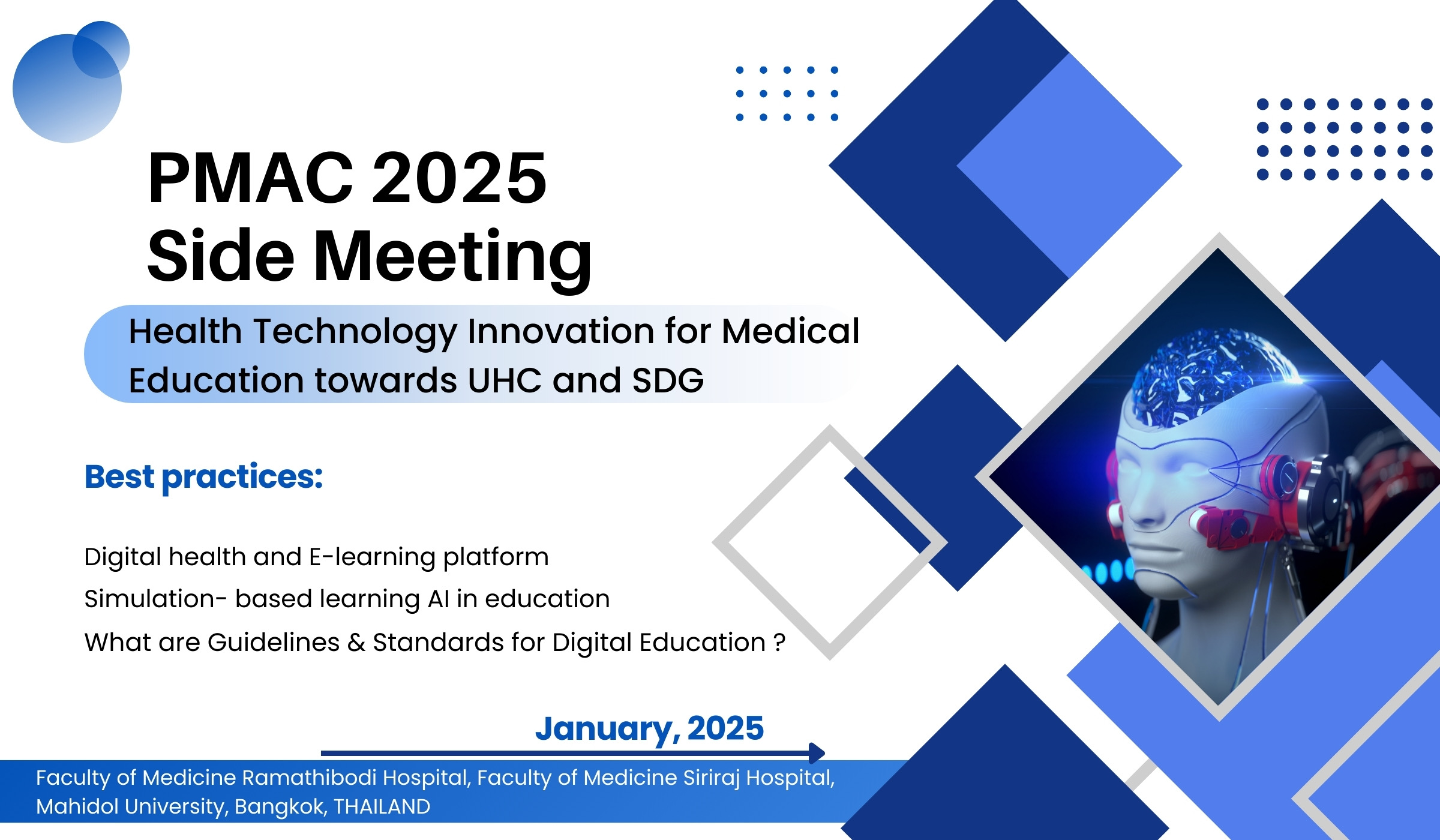Side Meetings
SMB134
Health Technology Innovation for Medical Education towards UHC and SDG
29
Jan
- Faculty of Medicine, Siriraj Hospital and Ramathibodi Hospital , Mahidol University

The World Health Assembly (WHA) has adopted several resolutions focused on digital health and workforce development, such as the 2020 Global Strategy on Digital Health and the 2021 Health Workforce Education Strategy. These initiatives align with the WHO’s goal of achieving universal health coverage (UHC) by strengthening the HWF through technology-driven education and continuous professional development.
Through these initiatives, the WHA aims to ensure that healthcare workforce worldwide are prepared for the demands of modern healthcare, with a strong focus on digital literacy, ethical use of AI, and interprofessional collaboration. The Assembly’s commitment highlights the essential role of health technology in shaping the future of healthcare education and ultimately improving patient care outcomes globally.
1. Strengthening HWF Education and Training
The training of health workforce is important for evolving healthcare demands, especially in underserved regions. By leveraging health technology, educational programs can reach more students and provide more standardized training across different settings. Investments in digital health literacy for educators and students are encouraged to ensure both groups can effectively use digital tools and data in clinical decision-making.
2. Promoting Digital Health and E-Learning Platforms
The digital learning platforms are advocated to enable remote education and expand access to training for health workforce in low-resource and remote areas. Digital platforms also support lifelong learning and continuous professional development, allowing HWF to stay up-to-date with new medical knowledge and technologies.
3. Advancing Simulation-Based and Experiential Learning
The integration of simulation-based training, virtual reality (VR), and augmented reality (AR) in health workforce education enhances practical skills and improve competency. The integration of AI ethics into health workforce curricula, preparing future providers navigates the ethical challenges posed by digital health innovations.
4. Ensuring Ethical Use of AI and Big Data in Education
Recognizing the rise of AI in education, the ethical frameworksare promoted for its use, ensuring data privacy and transparency in AI-driven educational tools. The use of AI for adaptive learning and personalized training is encouraged while emphasizing the need for ethical governance.
5. Building Interprofessional and Collaborative Education Models
The interprofessional education is the collaboration across different healthcare disciplines which foster teamwork and communication skills. By using collaborative digital platforms, health workforce from diverse fields can train together, simulating real-world scenarios where interdisciplinary teamwork is crucial. The global partnerships can emphasize a collaborative approach, which is critical for managing complex patient needs.
6. Capacity Building for Health Workforce Retention and Resilience
With the ongoing workforce shortages in healthcare, using technology for capacity building and retention is essential. Through continuous learning opportunities, telemedicine training, and digital mentoring, health workers are more likely to stay motivated and feel supported in their roles including mental health technologies in supporting HWF’ well-being, especially post-COVID-19.
7. Developing Guidelines and Standards for Digital Health Education
International standards for digital health education ensures that technology-enabled learning meets high-quality benchmarks. Itinvolves working closely with health workforce, educational institutions, and the private sector to develop guidelines for using digital health tools in education.
1. To explore the perceptions and practices of the health technology in education for medical students and clinicians
2. To identify needs and opportunities of the health technology in education for strengthening the capacity of medical students and clinicians
3. To develop a plan of action and recommendations for the incorporation of the health technology in education in medicaltraining and clinical practices.

